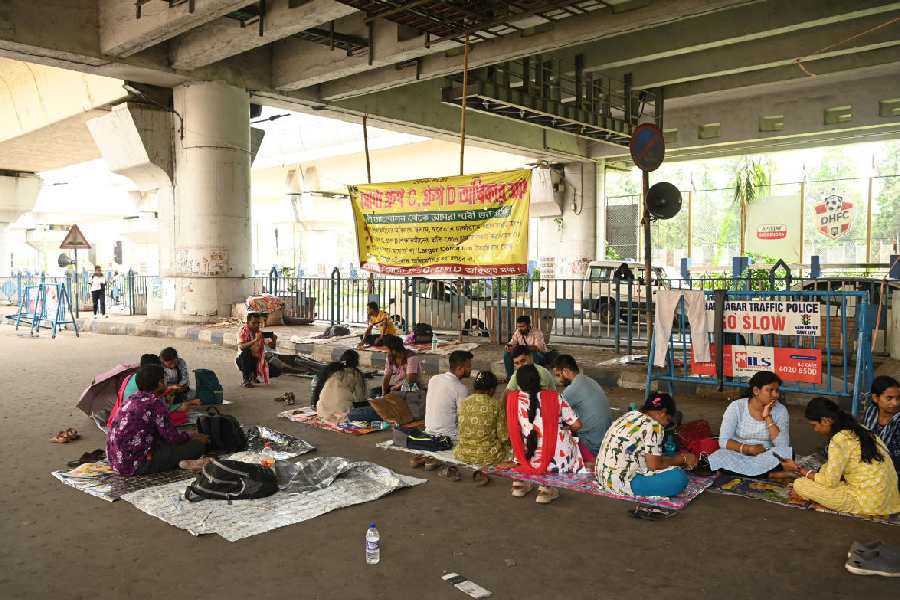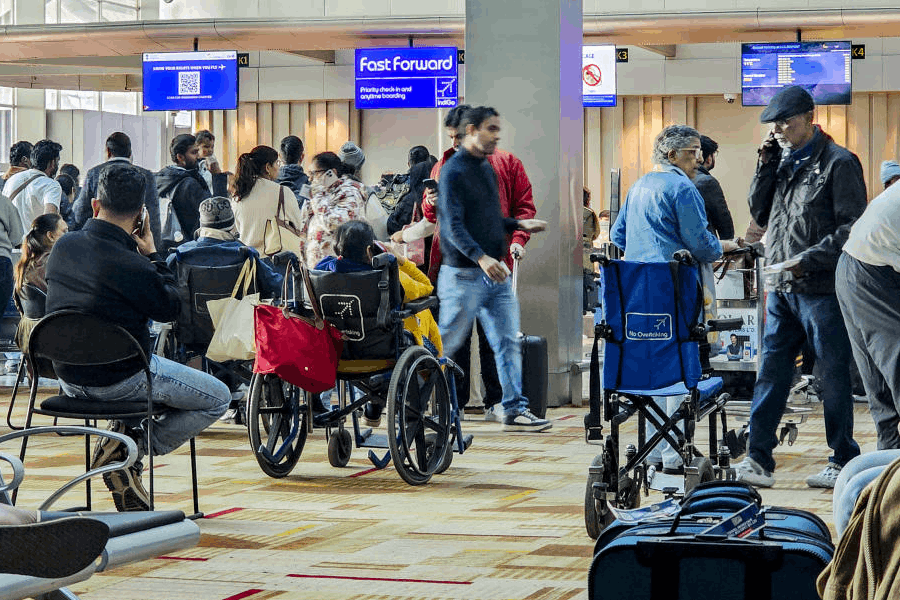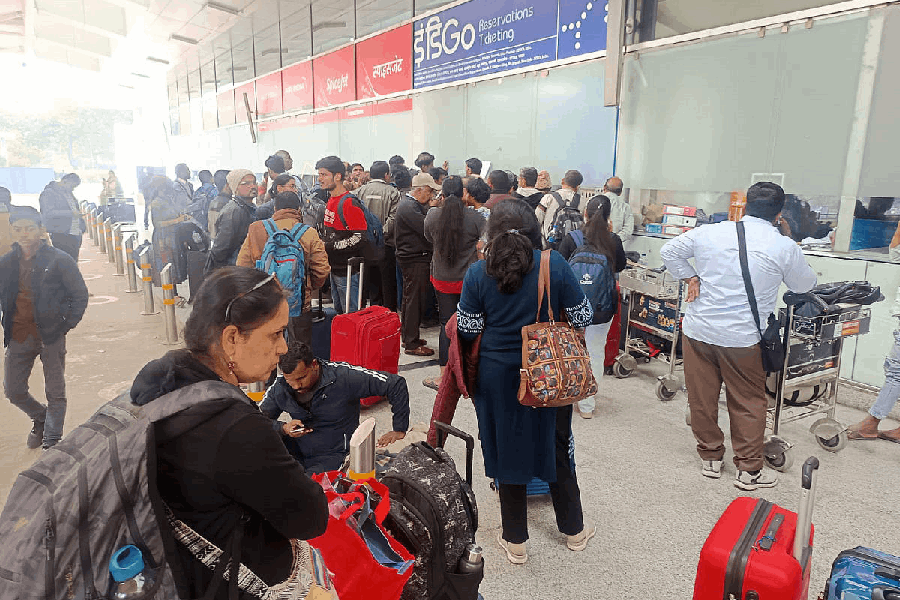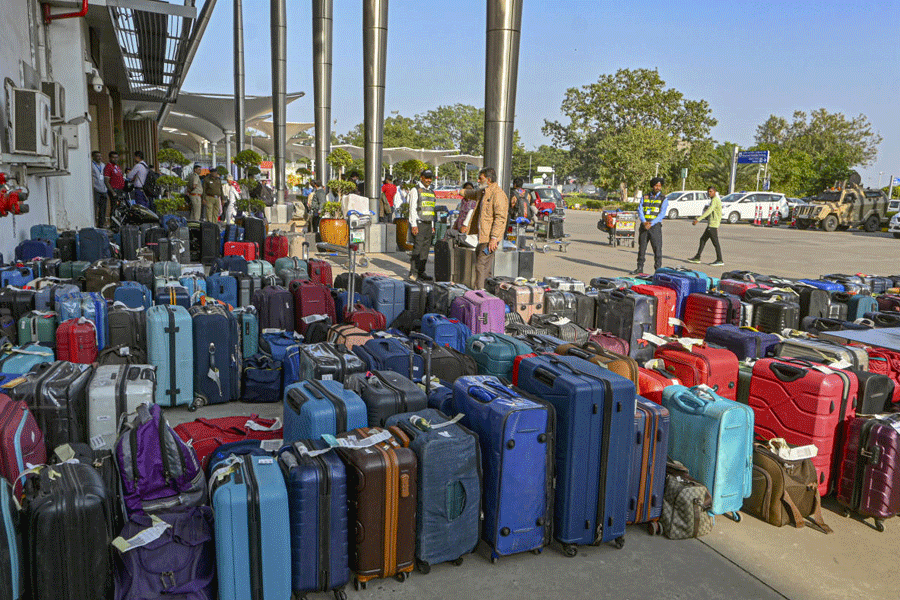Police have summoned 15 people for allegedly instigating or participating in the May 15 violence at Bikash Bhavan, where schoolteachers sacked by a Supreme Court verdict held 3,000-odd government employees and visitors hostage for over
eight hours.
Many of the sacked teachers who have received the summons claimed they were not present at the spot — the education secretariat — on Thursday.
The summonses read: “...It is revealed that you damaged the government property and obstructed the public servant from his lawful duty and threatened the
public servant from doing their duty and there are also reasonable grounds to question you to ascertain facts and circumstances from you, in relation to the present
investigation.”
The summonses adds: “Hence you are directed to appear before me… at Bidhannagar North Police Station.”
The Bidhannagar police said all the summonses had been issued on the basis of electronic evidence. Some of those summoned have been asked to appear on Monday and the others on Wednesday.
Several teachers accused the government of trying intimidatory tactics and said they were taking legal opinion.
The apex court had on April 3 sacked 25,753 teachers and other school staff en masse saying the entire recruitment process had been vitiated. It later allowed the teachers “not found to be specifically tainted” to continue to teach, and get paid, till December 31, by when a fresh recruitment process that they can participate in must be completed.
However, some 15,000-odd among the “not specifically tainted” teachers are agitating to prevent the state government from notifying a fresh recruitment process, saying theydon’t want to take a fresh exam again.
The protesters have been on a sit-in outside Bikash Bhavan for the last 11 days. During their siege of the building on Thursday, the police were allegedly attacked with bricks. The police too used “force”, with photographs showing severalteachers bleeding.
“We will question them (those summoned). If they haven’t done anything unlawful, they have nothing to fear,” a senior officer at the Bidhannagar police commissionerate said.
Sangita Saha, one of the protesting teachers, said 17 teachers had so far received the police notices. The police, however, put the number at 15.
The teachers started receiving the letters from Saturday, Saha said.
Saha was on the dais with Mamata Banerjee when the chief minister addressed the sacked and aggrieved teachers on April 7 at the Netaji Indoor Stadium.
“The state administration is trying to play mind games with us. This is an attempt to coerce us into withdrawing our protest,” Saha said.
“We won’t be deterred. We shall continue with our protest. We are taking legal opinion to decide what our response should be.”
Mehboob Mondal, one of the official spokespersons for the agitating teachers, has received a summons. “We will consult our lawyer,” he said.
Another teacher said it was surprising that the police were summoning teachers “after beating them up on Thursday night”.
“This government is not interested in catching those who took money to help the tainted candidates bag jobs. It’s busy persecuting the untainted teachers who secured their jobs fairly,” Siuli Batabyal, one of the protesting teachers, said.
“The state government wants us to appear for the selection tests again to be able to continue as teachers beyond December. We are opposed to writing any fresh recruitment exam. The government wants to break our protest at any cost.”
The School Service Commission is going ahead with its preparations to issue the notification for the fresh recruitment process by May 29. The state government and the commission have moved review petitions before the apex court asking that the “not specifically tainted” teachers be reinstated.
The police have started a suo motu case over Thursday’s violence, invoking charges including criminal trespass, rioting, wrongful restraint, causing harm to public servant deterring them from performing duty, assault and criminal force against government servant, criminal conspiracy, damaging public property and common intention.










